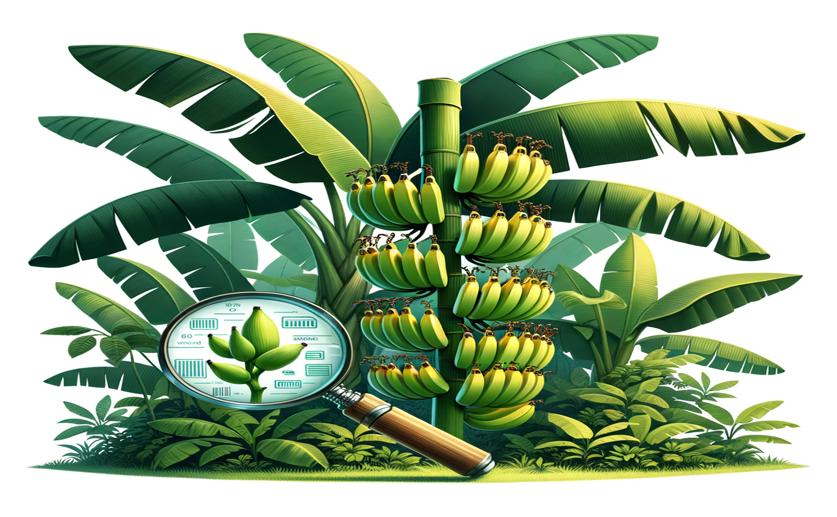
Genomics Identifies Origins of Naturally Occurring Seedless Bananas
Jenn Hoskins
13th July, 2024

Image Source: Natural Science News, 2024
Key Findings
- Researchers at National Taiwan University found a way to produce seeds from nearly sterile triploid bananas
- The seeds grew into tetraploid seedlings, which have four sets of chromosomes, suggesting a method to increase genetic diversity
- Hybridization between triploid bananas and wild diploid species could lead to more resilient banana varieties
References
Main Study
1) Phylogenomics identifies parents of naturally occurring tetraploid bananas.
Published 12th July, 2024
https://doi.org/10.1186/s40529-024-00429-9
Related Studies
2) Identification of cytoplasmic ancestor gene-pools of Musa acuminata Colla and Musa balbisiana Colla and their hybrids by chloroplast and mitochondrial haplotyping.
3) Ascertaining maternal and paternal lineage within Musa by chloroplast and mitochondrial DNA RFLP analyses.
Journal: Genome, Issue: Vol 45, Issue 4, Aug 2002
4) The banana (Musa acuminata) genome and the evolution of monocotyledonous plants.
5) Sexual polyploidization in plants--cytological mechanisms and molecular regulation.



 23rd June, 2024 | Greg Howard
23rd June, 2024 | Greg Howard